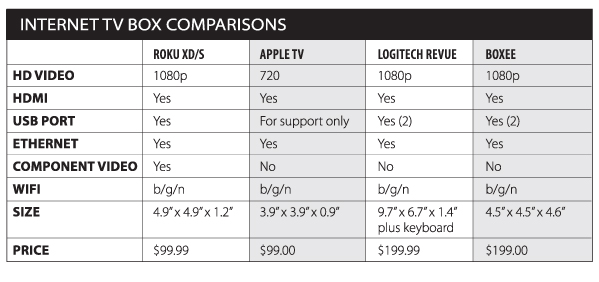You know who else has a similar business model? The cable and satellite TV companies.
They know their customers are hooked. American Idol, True Blood and Glee are highly addictive. So much so that hardly anyone can bear to give them up. And the cable companies know this.
As a result, they are able to keep the price of cable jacked up as high as possible, and the poor customers have no choice but to keep paying through the nose.
Until now.
The War On Drugs may be lost, but the war on cable TV companies is just beginning.
Why cable TV sucks
There are two big problems with how we watch television today. The first is that most of us don’t watch even a tiny percentage of the cable channels we receive, but we still pay for them. We get hundreds of channels we don’t care about, all bundled together so it seems like we’re getting value for money. The fact is, most viewers watch 20 channels or less. If we could pick and choose just the channels we want, then we would almost certainly pay much less. But we don’t have that option.
The other big issue is less about what we watch on television and more about how we watch it.
The chances are that a huge television screen dominates your family room, and you have another television in your kitchen and probably one in your bedroom. But if you want to watch a movie on Netflix or share a silly YouTube clip with friends, I bet you find yourself hunched over a laptop hoping the WiFi connection is good enough to handle the streaming video smoothly.
Most televisions are set up for cable or satellite and don’t allow for the Internet at all. At a time when more Web videos are watched each day than searches are made on Google, the fact that folks can’t watch YouTube on their large-screen television is crazy.
Internet TV is arriving
The integration of television and the Internet has been a hot discussion topic for years but it’s only now that the technology is catching up with the dream. So let’s assume you want to get Web video on your big-screen television. What are your options, and what do you need to know?
One complicating factor is there’s no agreement yet as to what the perfect Internet TV device even looks like. Should it just be part of the television itself? That type of approach simplifies connections and wiring because there’s one less device involved, but it’s expensive unless you’re buying a new television anyway. Should the ideal Internet TV device take the form of a personal computer running special software, hooked up to a television directly? Such solutions are very capable but can get more complicated than most viewers want. So what then?
A solution in a box
My recommendation for now is to use one of the Internet TV boxes that are being introduced at pretty low cost by companies like Apple, Boxee, Google/Logitech, and Roku. These won’t break the bank but will give you access to hundreds of online video channels and are easy to attach to your existing television setup. They all offer a simplified interface that pops up on your television screen and presents you with the various online channels to which you have access.
These typically include Netflix’s instant streaming library; Hulu Plus offering popular television shows such as Glee, House and Modern Family; Amazon Instant Video; sports channels for NHL, UFC and NBA; as well as music channels like MP3tunes and Pandora.
The big advantage of these systems is there is no monthly cost for the hardware and you can pick and choose to which premium channels you subscribe. In addition, there are hundreds of online-only television channels that you just cannot get on cable television, with more launching every day.
And with one of these devices, you won’t have to hunch over a laptop to watch YouTube videos any more. So which one is best?
Our top pick is the Roku XD/S for $99.99. It offers everything most people will want including a decent remote, good WiFi connectivity, 1080p HD video and a USB port to make it easy to show photos on your television. It’s a solid pick.
Second choice is the Apple TV. It’s priced within a dollar of the Roku box. The downside is its HD video is nowhere near as good, and the choice of channels is more restricted than the Roku box, probably because Apple wants to encourage users to rent movies through their own iTunes store. The Apple TV is a great way to go though if you already have other Apple devices on a home network: you can use an iPhone or an iPod as a remote control, and your existing iTunes music library can be streamed through your television seamlessly.
Joint runners up are the Boxee device and the Logitech Revue with Google TV, both available at $199. These are very capable devices, and the Logitech is the best implementation yet of Google’s new Google TV product. But Google TV is still too new in our view, and the Boxee box doesn’t offer enough extra to justify its premium price point.
The future is nearly here
Technologies like Internet TV represent a big threat to the cable and satellite television companies. They know if you can buy the shows you like individually at $0.99 each it will make it much harder for them to sell inclusive packages at $100 a month. At present they have the advantage that there still isn’t quite the choice of current television programming available on Internet TV devices that you can get with a full-on cable package. With any hope, that will change in the near future, but if staying current on network TV is important to you, cutting off cable probably isn’t right for you just yet.
But if you want to cut your monthly television bill, watch Netflix and YouTube on the big screen and stick it to your cable TV drug dealer at the same time, Roku and Apple TV are currently your best choices.

Chris Trayhorn is the founder of Revenue Performance magazine and the CEO of mThink.com. He knows a lot about online marketing and technology and a little bit about nearly everything else. E-mail: chris@northsidesf.com








